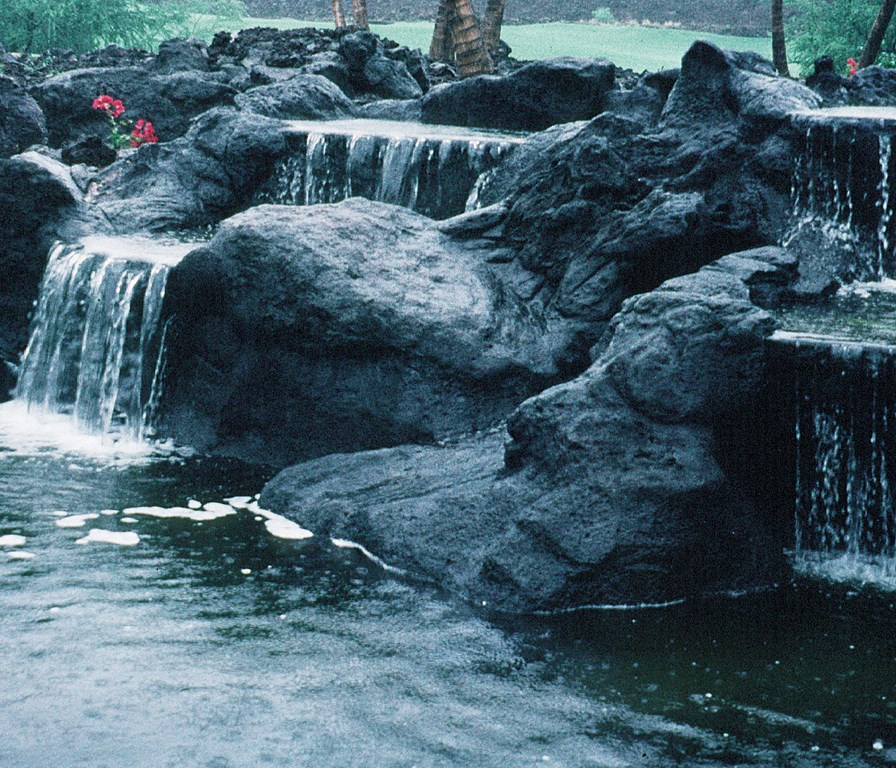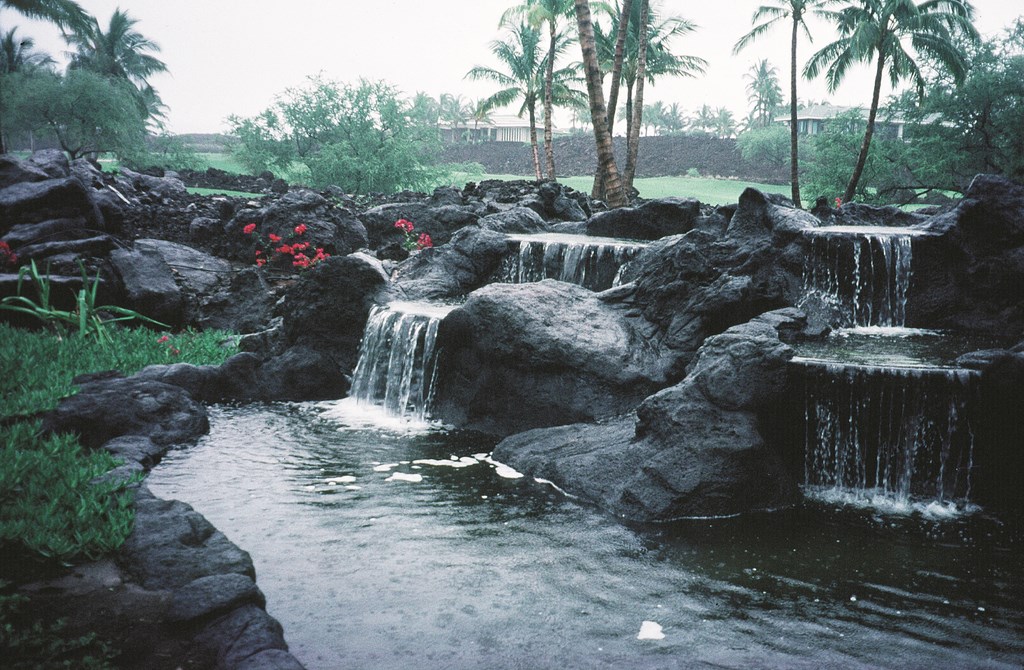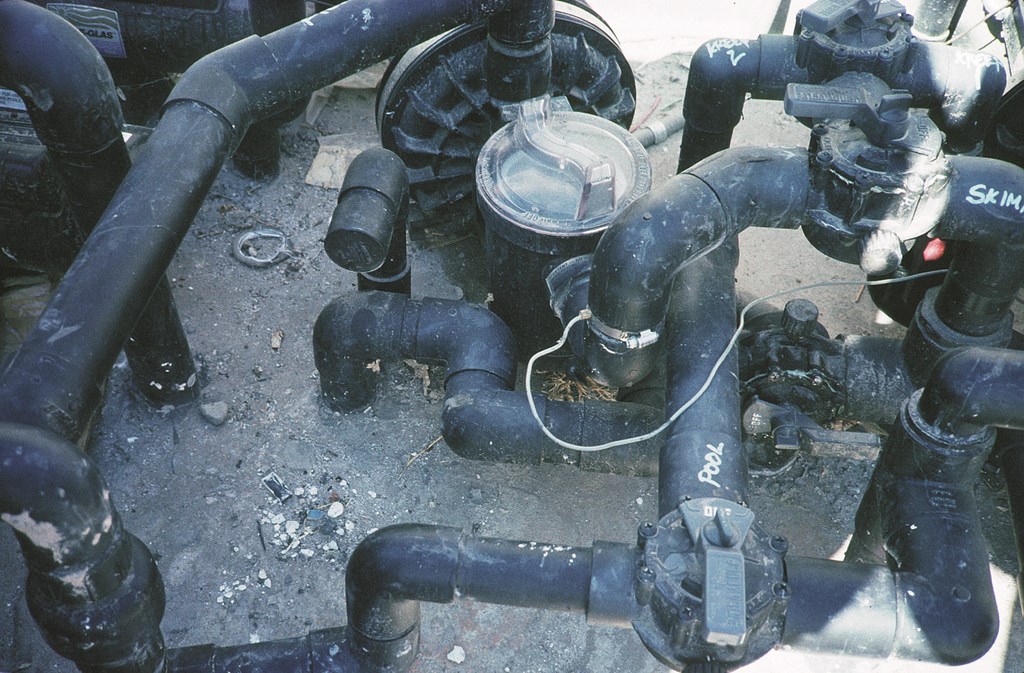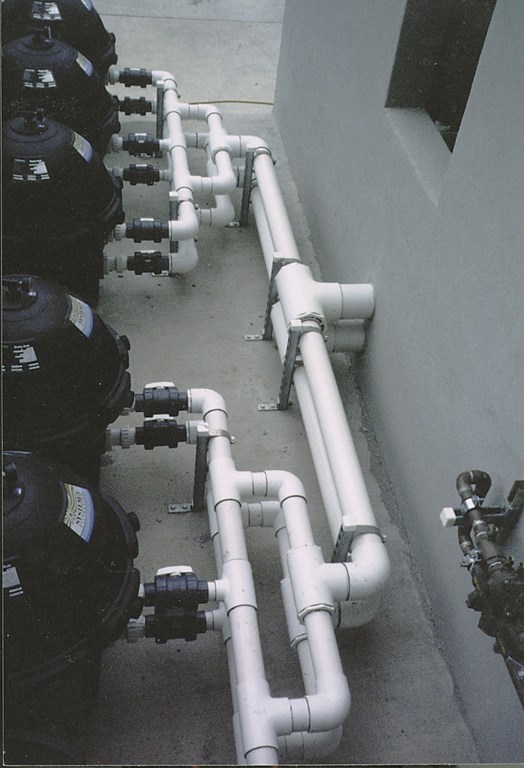As Good as It Looks?

How far we’ve come since the days of the lazy L, the kidney and the rectangle!
During the more than 30 years I’ve been part of the pool industry, I’ve witnessed mind-boggling advances in the designs of swimming pools, spas and watershapes of all types. Especially in the past 10 years, the ideas, creativity and workmanship found in residential backyards far surpasses what we saw or even dreamed of 20 or 30 years ago. Back then, you’d have to go to a movie set or Las Vegas to see the exotic designs we are seeing today.
I’d even say that today’s designers are turning backyard pool environments into an art form. We see water surfaces that vanish into surrounding vistas, fiberoptic lighting that accentuates free-form curves, waterfalls cascading from brilliant rock structures, fountains adding motion and sound, beach entries, swim jets and countless other innovations that have transformed the common backyard pool into waterparks and full-tilt family fun centers.
In some cases, these installations can literally take your breath away. I’ve been privileged to visit many of these aquatic wonders, and I’m sure I look silly with my mouth wide open, as though I’m Balboa seeing the Pacific Ocean for the first time.
And that awesome impression usually sticks – unless and until I visit the equipment pad, that is. It’s another world “back there,” and I catch myself looking from the pool to the pad and wondering how in the world the same contractor could be responsible for both.
UGLY DUCKLINGS
It’s really too bad, because for all of the stunning beauty and considerable design talent brought to bear in making the sizzle, the steak is often sadly lacking.
Pumps scream because of poor plumbing configurations, excessive horsepower and improperly sized piping. I see valves stuck everywhere – valves to correct defects in sizing and cover for improper application and installation of pumps, filters, heaters and sanitizing systems. And all too often, I find filter pressures in excess of 25 psi, driving dirt right through the filter and back into the pool.
And this filter pressure isn’t just an aesthetic or maintenance issue: Some of these tanks are just waiting for the sloppy replacement of a clamp, and if you’ve ever seen a filter tank blow, you know the sort of hazard I’m thinking about.
| Getting a watershape like this one to perform at peak efficiency requires thought and care in setting up the circulation system — and observance of some basic principles of hydraulics. |
So there I stand, getting more depressed by the minute. As I do, it occurs to me that the contracting company has worked for weeks, or even months, building this beautiful creation and, as an afterthought, has thrown the equipment pad together just to get the whole thing going.
Is it because they’ve used 1-1/2- or 2-inch plumbing all their lives that they won’t use 2-1/2-inch or 3-inch pipes – even if the manufacture of the pump recommends it? Is it because they were simply in a hurry, or because job costs had crept over budget? Or is it that they just don’t know any better?
Don’t get me wrong: There are many contractors who do take hydraulics, filtration, heating and sanitization of the pool as seriously as they do the design and construction of the pool itself. I see them in schools and seminars every year. Frankly, it’s the ones that don’t attend who are usually the ones who won’t take the time to get things right or simply don’t know any better. Theirs are the pools I get to visit the most, usually because of a problem with plumbing, sizing or installation.
I shake my head as I walk away from these projects, wondering how much these basic mistakes cost the watershaping industry every year – not just in terms of dollars, but in terms of reputation, growth and customer satisfaction. It’s an ugly situation – and the saddest thing is that these problems shouldn’t have arisen in the first place.
HOW TO KNOW?
That’s right. The majority of the most troubling plumbing, sizing and installation mistakes can easily be remedied – although it’s obviously far easier if you take care of them ahead of time rather than after the fact! All it takes to rise to the occasion is observance of some simple guidelines.
I don’t intend this as criticism for every installer out there, but I do intend this exercise in determining how your hydraulic systems line up with a set of uniformly high standards as a test for everyone who designs, engineers and builds watershapes. The goal is simple: to help you avoid substandard circulation systems on all your future projects, no exceptions.
To see where you stand, read the five following questions and honestly select the option that best applies to the way you approach things. These aren’t all “yes” or “no” kinds of issues, but the differences in answers are illuminating, as we’ll see below.
1) Does your company (or your sales staff) sell horsepower?
[ ] All the time
[ ] Only to get the job
[ ] Yes, it’s a great sales tool
[ ] Never
2) Do you start up filters at pressures greater than 20 pounds?
[ ] About 75% of the time
[ ] About half the time
[ ] Almost never
3) What size piping do you use in your pools?
[ ] We use 1-1/2-inch pipes
[ ] We use 2-inch pipes
[ ] We use both in combination
4) Do you use the same pump for pool/spa filtration that you use for the spa jets?
[ ] If at all possible
[ ] Once in a while
[ ] Only on residential pools
5) Do you supply your plumber with a plumbing schematic?
[ ] Yes
[ ] No
How can answering this handful of simple questions tell you whether or not you’re taking care of business on the equipment pad? Let me start by conceding that it can’t, really, because there are so many variables at play in the range of systems installed these days. But your answers might just reveal a thing or two about your approach in these five very important areas.
FIVE HYDRAULIC KEYS
As you reflect on your answers and what they say about the way you do things, consider these specifics:
[ ] Selling horsepower: If you or your people are selling horsepower, you’re doing yourself and your customer a disservice. In fact, I’d like to stress here something I say to pool and spa professionals all the time: Bigger is not better when it comes to horsepower.
With the cost of energy going through the roof, we owe it to our customers to put the right size pump/motor combination on the pool. In a large part of the country, the difference between a 3/4-hp pump and a 2-hp pump is about $500 a year in operating cost on a pool operated eight hours a day, 365 days a year.
Please bear in mind that most 3/4-hp pumps on the market today can easily circulate a 30,000-gallon residential pool in eight hours and a 23,000-gallon commercial pool in six. So why on earth would you want to oversize the pump? When you go to the trouble of building a stunning backyard environment for your client, why spoil their positive experience by driving up their energy costs?
[ ] Overpowering filters: A high initial filter pressure indicates you haven’t done well in designing a hydraulic system. This pressure reading indicates the resistance of the system, which means a high reading here indicates high resistance – which is simply not good, because it can only go higher as the filter cycle wears on.
| A mess at the equipment pad is an all-too-common consequence of poor hy- draulic planning. Each of those extra (and unnecessary) twists and turns puts a burden on the system, lowering efficiency and raising operational costs for what otherwise may be a beautiful installation. |
Filters work best at a starting pressure of 5 to 15 pounds. If yours start out at higher than 20 psi, it’s time to rethink the way you’re doing things. An oversized pump, undersized piping, too many fittings and poor plumbing configurations invite high pressure. The resulting flow through the filter is at a much higher initial velocity than the filter was designed to pass. This often results in poorer water clarity than your customer will accept – not to mention the fact that higher pressure will also shorten the life of the filter internals and the filter itself.
Of course, I could offer a host of other reasons why filter efficiency should be important to you, but let’s focus on clarity. If you go to the trouble and the client goes to the expense of installing a beautiful exposed-aggregate finish or an underwater mosaic or any of the host of impressive visual features now available to designers, why cloud the water and obstruct the view?
[ ] Sizing pipe: The best flow through a 1-1/2-inch, schedule-40 PVC pipe is approximately 45 gallons per minute. At full flow, pipes of this size can handle nothing more on residential pools than 22,000 gallons or, on commercial pools, more than 16,000 gallons. Given those limitations, the biggest pump you should use on 1-1/2-inch plumbing is a full-rated 1/2-hp pump or an up-rated 3/4-hp pump – although you can fudge upward to 3/4-hp full-rated pump or a 1-hp up-rated pump if the equipment pad is within 25 feet of the pool.
The best flow through a 2-inch, schedule 40 PVC pipe is approximately 75 gpm, which is suitable for use on residential pools up to 36,000 gallons and commercial pools up to 27,000 gallons. The biggest pump you should use on 2-inch piping is a 1-hp full-rated model, or a 1-1/2-hp up-rated pump. Anything over that will actually decrease your flow due to excessive friction in the pipe due to high velocity.
Again, just as with an oversized pump, undersized plumbing wastes energy and doesn’t lend itself to optimum circulation and filtration.
[ ] Double duty: If your residential pool is under 22,000 gallons and there are only four jets in the spa, you might get by using just one 3/4-hp pump for both the pool and spa – provided everything is set up just right. The drawback is a big one: When you’re heating the spa, you’re heating it through the spa jets, which means you must turn off the air to the jets or the heat-up time will be much longer, wasting energy.
Generally, however, spas have more than four jets these days, and it takes a larger single pump – a 2- or 3-hp unit – to power the system. Because the spa is only operated an average of five percent of the time, 95% of the time you waste energy by using so large a pump on the circulation system, for which you might have otherwise have gotten by with a 3/4-hp pump.
| Many commercial installations (such as this one) are set up with the aid of a detailed plumbing plan that’s part of the project from the outset rather than an afterthought on the equipment pad. This sort of precision impresses owners — and delights maintenance crews. |
Some installers try to get around this obvious problem by plumbing the spa with 2-inch pipes and the pool with 1-1/2-inch plumbing. The problem here is that when the big pump is switched from the spa jets to the pool, the pressure on the filter goes way up. The big question at this point is, why not use two pumps to get the job done the right way?
[ ] Plumbing with a plan: Some of the best plumbing jobs I’ve ever seen are in commercial equipment rooms installed by a true “craftsmen” – a word you don’t associate all that often with residential equipment pads. These accomplished professionals have two things going for them: an engineering plumbing plan and the desire to create a work of art.
If contractors would take the time to provide their plumbers with a schematic showing pipe sizing and the desired layout, I have the suspicion that hydraulic problems would become a thing of the past. And why this doesn’t happen is a mystery to me, because a proper plumbing arrangement plays the most critical role in making a watershape perform as advertised.
We can change pumps, filters and some bits of piping at the pad, but if the piping under the ground and in the walls is not the right size or is routed incorrectly, it’s too late. A plumbing schematic changes all that: It enables everyone involved with the project – and especially the plumber – to know where the plumbing runs go, how they connect and where and what the pipe sizing should be.
Drawing this schematic is also a great mental exercise: Quite simply, doing so forces you to think through the overall layout and the hydraulic principles at work.
FOOD FOR THOUGHT
Absolutely, these are painfully fundamental issues, and one might think that designers, engineers and builders would be way past these basics – and indeed, many are. But there are many others who do not take these five principles of hydraulic design into consideration when they do their work. And frankly, some of the worst offenders are among those breaking new ground when it comes to creativity and design inspiration.
My advice is simple: To make your visual masterpieces into hydraulic ones as well, take time to grace your installations with a circulation system worthy of their good looks. When you do, you can walk away knowing that the beauty you’ve given your customer is much more than skin deep!
Fred Hare, a 34-year veteran of the pool/spa industry, is director of training for Sta-Rite Industries of Delevan, Wis. After working for Swimquip and Aquality, he joined Sta-Rite 18 years ago, taking on his current role as training director after seven years with the company. Known and regarded throughout the pool/spa industry for his seminars on hydraulics and system design and engineering, Hare also teaches hydraulics at Sacramento City College in California.













